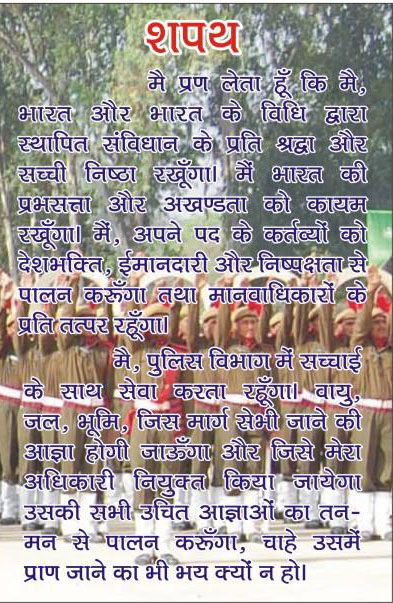Panipat at a Glance
According to the legend, Panipat was one of the five cities (prasthas) founded by the Pandava brothers during the times of the Mahabharata; its historic name being Panduprastha. Panipat was the scene of three pivotal battles in Indian history. The First Battle of Panipat was fought on 21 April 1526 between Ibrahim Lodhi, Sultan of Delhi, and the Timurid warlord Zaheeruddin Babur. Babur’s force defeated Ibrahim’s much larger force of over one lakh (one hundred thousand) soldiers.This First battle of Panipat thus ended the ‘Lodi Rule’ established by Bahlul Lodhi in India.
The Second Battle of Panipat was fought on 5 November 1556 between the forces of Akbar and Samrat Hem Chandra Vikramaditya, a King of North India, who belonged to Rewari in Haryana and had captured the large states of Agra and Delhi defeating Akbar’s forces. This king, also known as Vikramaditya had won 22 battles against the Afghan rebels from 1553–1556 from Punjab to Bengal, and had his coronation at Purana Quila in Delhi on 7 October 1556 and had established ‘Hindu Raj’ in North India, before the 2nd battle of Panipat.Hem Chandra had a large army, and initially his forces were winning, but suddenly Hemu was struck by an arrow in the eye and he lost his senses. On not seeing him in his howdah on the back of an elephant, his army fled. He was later captured and beheaded by the Mughals. His head was sent to Kabul to be hanged outside Delhi Darwaza and torso was hanged outside Purana Quila in Delhi. This Second battle of Panipat thus ended the ‘Hindu Raj’ established by Hemu in north India, albeit for a short period.
The Third Battle of Panipat was fought in 1761 between the Afghan invader Ahmad Shah Abdali and the Marathas under Sadashivrao Bhau Peshwa of Pune. Ahmad Shah won but with a very heavy casualty rate on both sides. It resulted in the worst defeat of Marathas in their history. The war led to a power vacuum which later led to the British conquest of India. The famous Urdu shayar Maulana Hali was born in Panipat.
Modern Period
The advent of British Rule Marked the growth of Sikh Power in this region and the consequent destruction by British in 1805. The British in order to increase their sway beyond Yamuna took the Chiefs in Panipat under their protection. The British Controlled the affairs of all states in the region in a most effective manner through the political agency at Panipat . In 1845, the Sikh chief showed passive obstruction or open hostility to the British. The result was the police jurisdiction of most of the chief as well as transit and custom duty were abolished and a commutation was accepted for the personal service of the chief of his contingent. The political agency of Panipat was transformed into Commissionership under the commissioner of the cis-Satluj states. By 1846 several chiefships had lapsed owing to their failure to have male heirs and the so called break down of administrative machinery. The British acquired strips of territory around Panipat district in 1847. In 1849, Punjab was annexed and then it was declared that expect Buria and Kalsia all chiefs would cease to hold sovereign powers.
INDUSTRY
Panipat district is known all over the world for production of Rice, wheat and Milk. It is also known for agriculture research Institutions like National Dairy Research Institute, CSSRI, Wheat Research Directorate, National Bureau of Animal Genetics Resources, Sugarcane Breeding Institute etc.
The Revolt of 1857
The Panipat district played a significant role in uprising of 1857. Panipat was a military depot of great Importance then. Sham Singh, a sepoy of the 5th Native infantry told Forsyth, the then Deputy Commissioner Panipat, in the end of April 1857, that a general rising of the Sepoys would take place in the beginning of May. He was proved Correct at approximately 9 A.M. on Sunday 10th May 1857 an Indian regiment the 60th Native Infantry rose in open revolt at Panipat followed by 5th native infantry at 12 noon but the British were too alert and suppressed the revolt. Like the sepoys, the civil population was also badly affected . Indeed everyone among them irrespective of their caste , creed and religion stood against Britishers and played a significant Role in Struggle.
Rise of National Awakening
For a long time after the uprising the people of Haryana kept in suffering . On account of their opposition and indifference towards the British in the crisis but soon various changes swept in the country as well as the region as the result , the people of Panipat were influenced and became politically awakened and enlightened . Some organizations took the task of reformation . The organizations which rendered services in this district are as follows.
|
Year |
Name of Organization |
Aims and Objectives |
|
1883 |
Arya Samaj Panipat Cantonment |
Socio-Religious reforms of Hindus |
|
1884 |
Anjunam-Rifah-i-Am,Panipat City |
Socio-political awakening of India |
|
1886 |
Anjuman-islamiya ,Panipat City |
Bettering Muslim 'lot |
|
1886 |
Singh Sabha,Panipat City |
Reforming sikh religion |
|
1886 |
Central National Mohamedans Association Panipat City |
Bettering Muslim lot |
|
1888 |
Anjuman -Islamiya,Panipat Cantoment |
Bettering Muslims' lot |
|
1888 |
Singh Sabha Panipat Cantoment |
Reforming Sikh religion |
|
1890 |
Arya Samaj,Panipat City |
Socio-religious reform of Hindus |
|
1896 |
Sanatan Dharam Sabha Panipat Cantonment |
Hindu revivalism |
During this period the people also made efforts to establish re-organization at national level. Lala Murli Dhar of Panipat (1820-1924) was one of the founding fathers of Indian National Congress at Bombay in 1885. Later on during early twentieth century Indian National Congress organization spread its roots at various places in Panipat District.


